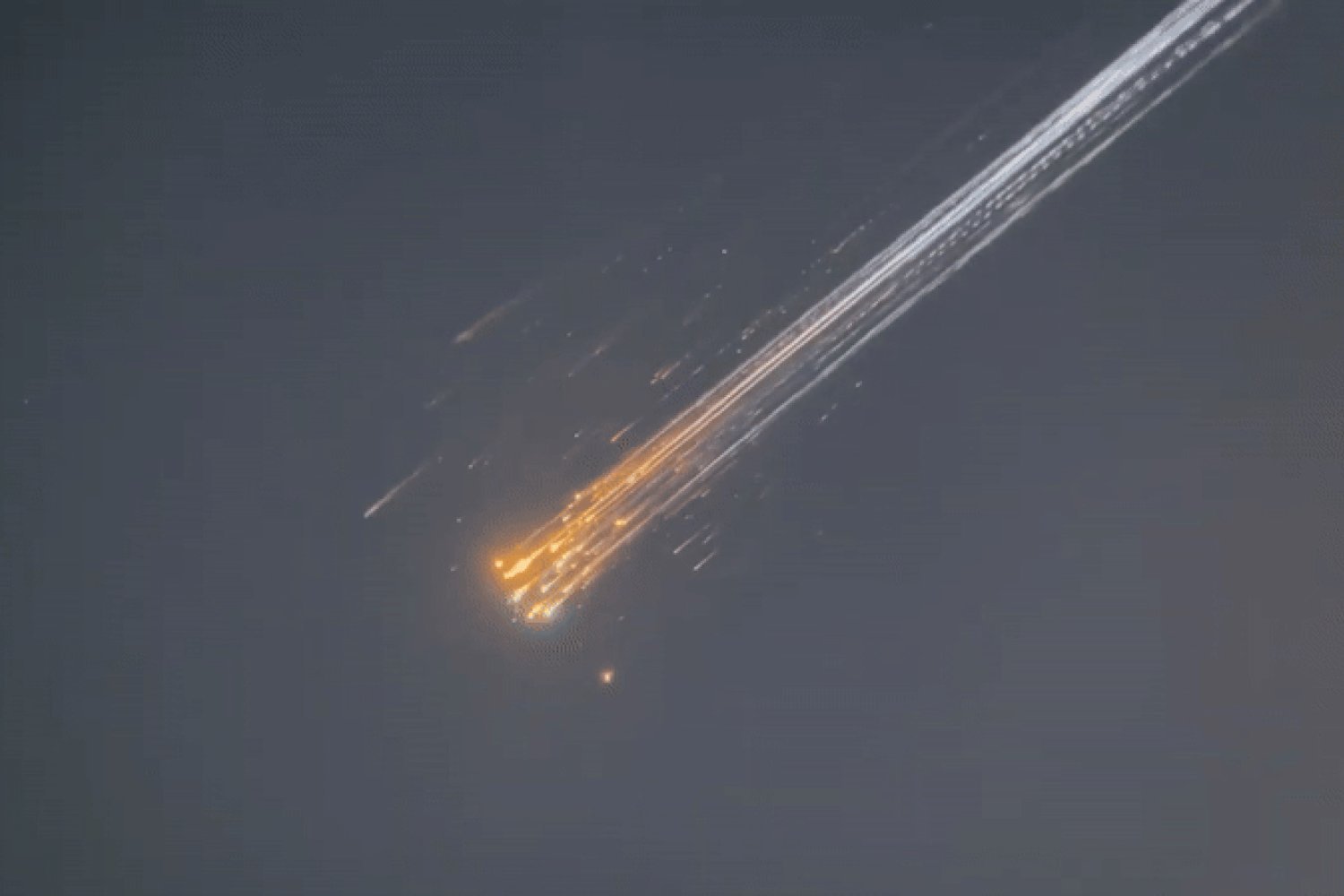SpaceX’s seventh Starship test flight concluded with an unexpected explosion over the Atlantic Ocean on Thursday, scattering debris and causing temporary air traffic disruptions. The incident, captured on video, showcased the inherent risks of pushing the boundaries of spaceflight technology.
The Starship, launched from SpaceX’s Starbase in Texas at 4:37 p.m. local time, initially appeared successful. The Super Heavy booster, a massive 233-foot-tall (71-meter) rocket central to SpaceX’s vision of cost-effective and sustainable space travel, was successfully caught by the Mechazilla tower. However, just 8.5 minutes into the flight, communication was lost.
According to a SpaceX statement, “Initial data indicates a fire developed in the aft section of the ship, leading to a rapid unscheduled disassembly,” a euphemism for the dramatic explosion witnessed by observers on the ground and at sea.
The explosion, resembling a scene from science fiction, sent bright orange-yellow streaks across the sky. Videos captured by individuals in Turks & Caicos and passengers on cruise ships in the Caribbean Sea documented the event’s dramatic aftermath.
The Federal Aviation Administration (FAA) confirmed the incident’s impact on air travel. Several aircraft were briefly diverted to avoid the falling debris, creating a temporary “dangerous area.” Flight radar data revealed a number of aircraft changing course east of Turks & Caicos around the time of the explosion.
While the FAA reported no injuries or property damage, CNBC indicated that several flights experienced delays and diversions. American Airlines reported fewer than 10 diverted flights, while Delta confirmed four. Flight tracking websites showed at least one cargo jet and a Spirit Airlines flight altering their routes to avoid the debris field.
SpaceX emphasized that the Starship remained within its designated launch corridor, designed to protect the public on land, water, and in the air. Any remaining debris was expected to fall within the designated hazard zone.
Elon Musk, on X (formerly Twitter), suggested a potential cause: an oxygen/fuel leak in the cavity above the ship’s engine firewall, building pressure beyond the vent capacity. Despite the setback, Musk expressed confidence that the next Starship launch, planned for February, would remain on schedule.
While the launch achieved a partial success with the Mechazilla tower successfully catching the Super Heavy booster, the in-flight explosion ultimately marked the mission as a failure. However, SpaceX emphasized the learning opportunity, stating that the test flight “will help us improve Starship’s reliability as SpaceX seeks to make life multiplanetary.”
This incident follows recent reports of Qantas delaying flights between Australia and South Africa due to warnings of potential space debris from SpaceX launches, as noted by The Guardian. The explosion is likely to trigger a detailed FAA investigation, similar to the one following SpaceX’s second Starship flight in November 2023, which resulted in over a dozen corrective actions.
Despite these setbacks, SpaceX continues to advance reusable rocket technology. NASA’s investment in Starship for the Artemis lunar program underscores the vehicle’s potential. However, SpaceX’s ambitious timelines for human missions to Mars, initially targeted for 2022, and a lunar flyby with a billionaire and artists, planned for 2023, have been significantly delayed. Musk’s previous statement regarding a potential Mars colony by 2025, with a settlement by the end of the decade, adds pressure to the company’s ongoing development efforts.










